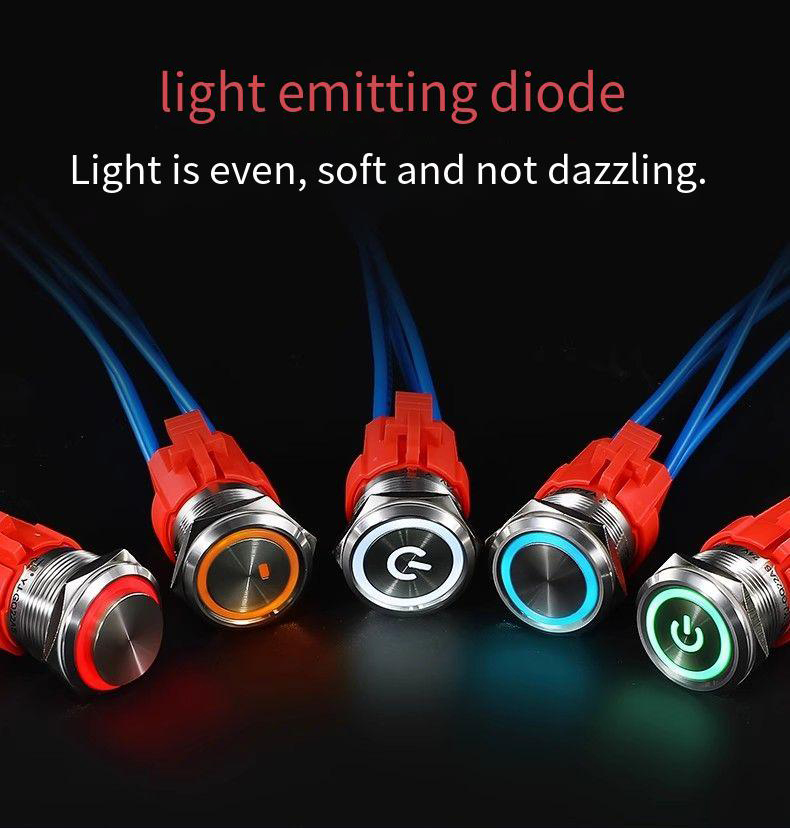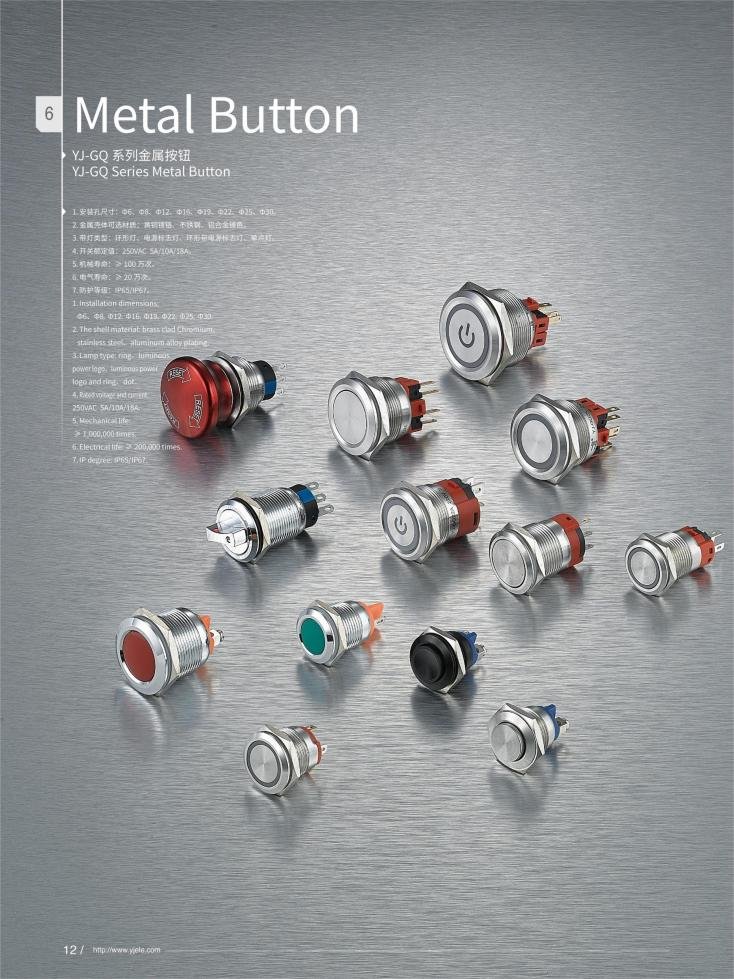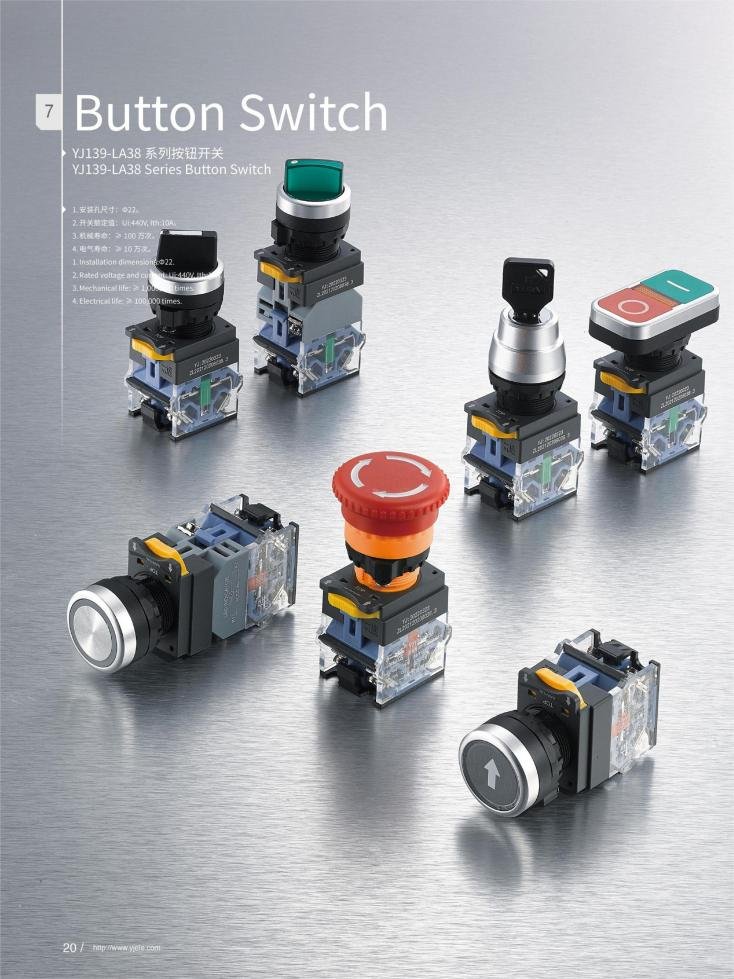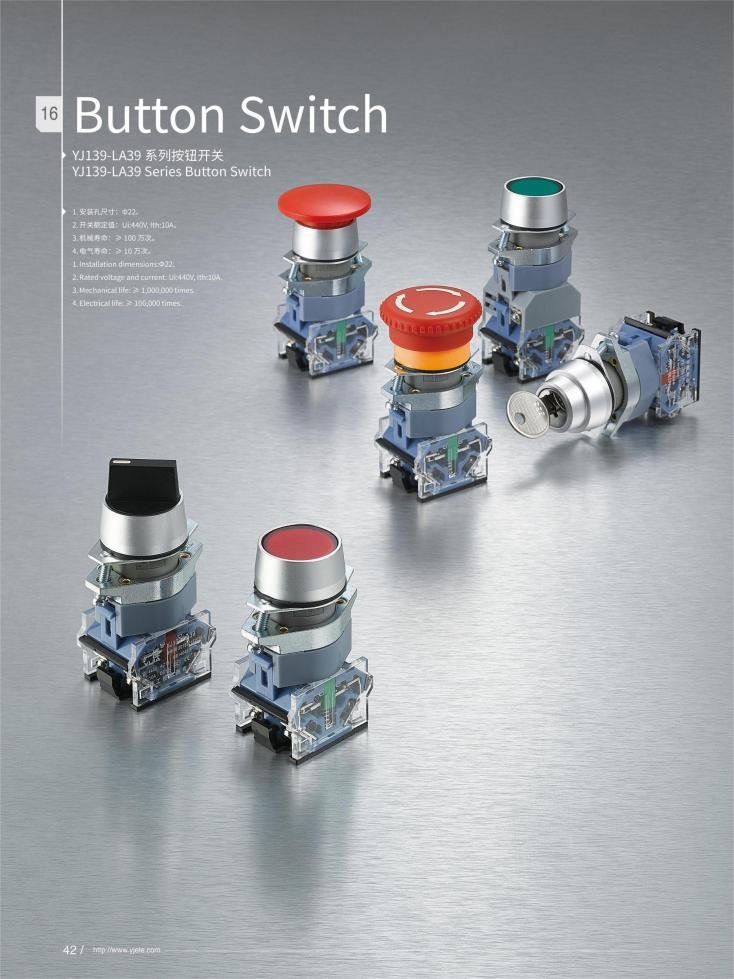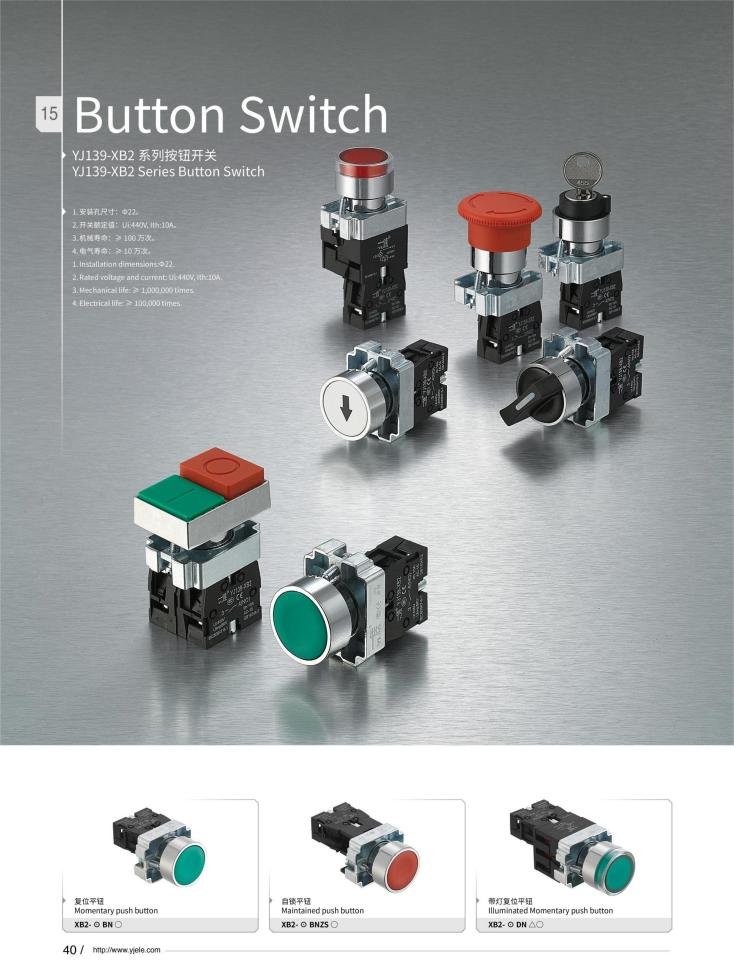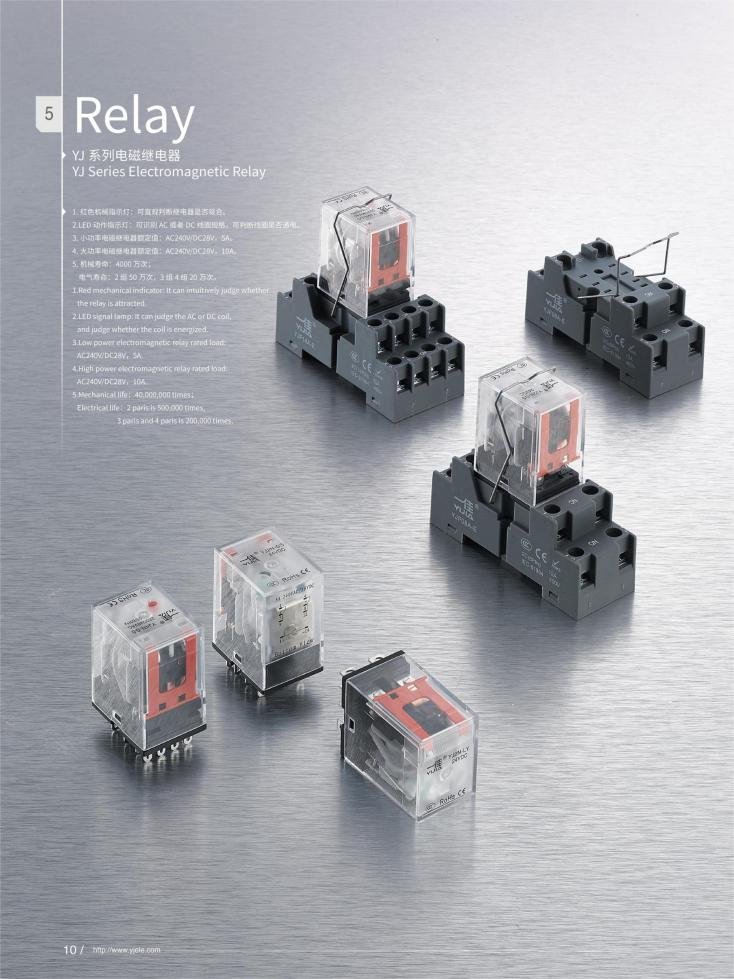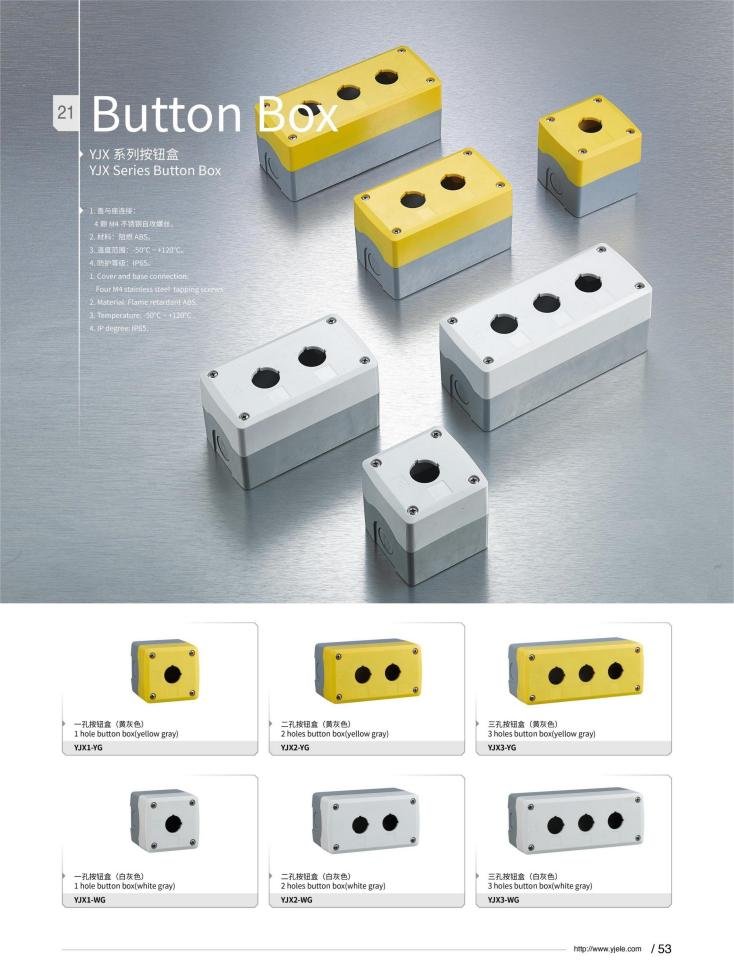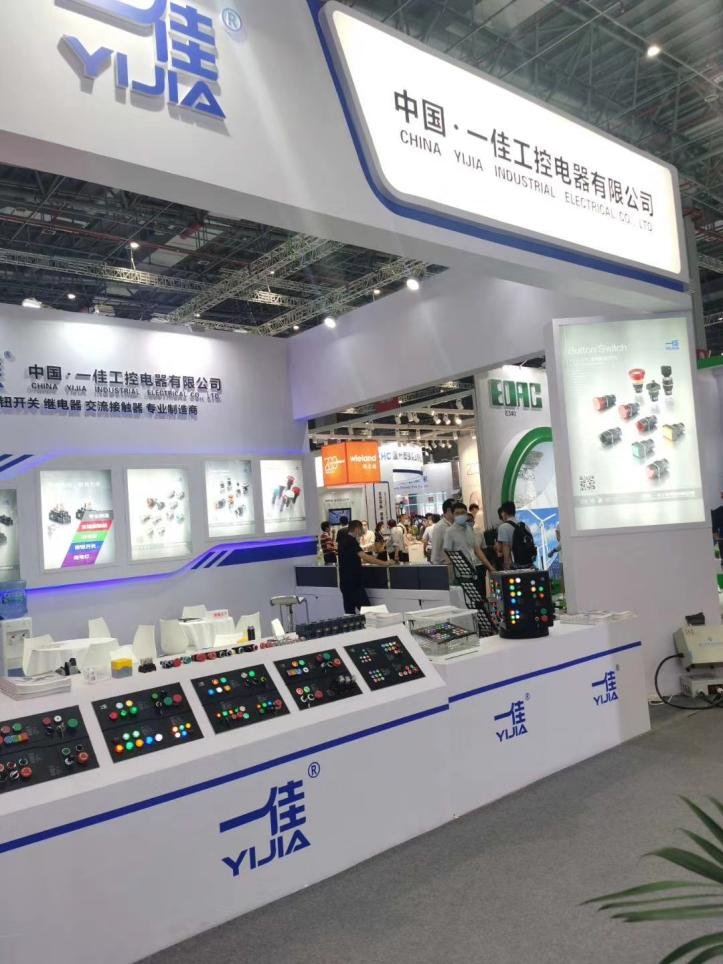Among various electronic and electrical devices, button switches are key components for achieving human-computer interaction, and metal button switches occupy an important position in many scenarios due to their unique material characteristics. Unlike plastic button switches, metal button switches use metal as the main shell and core structural material. They are electromechanical integrated components that achieve circuit on/off or signal transmission through pressing operations. Their structure usually includes a metal shell, contact system, reset spring, wiring terminals, and other parts, combining the convenience of mechanical operation with the durability of metal materials.
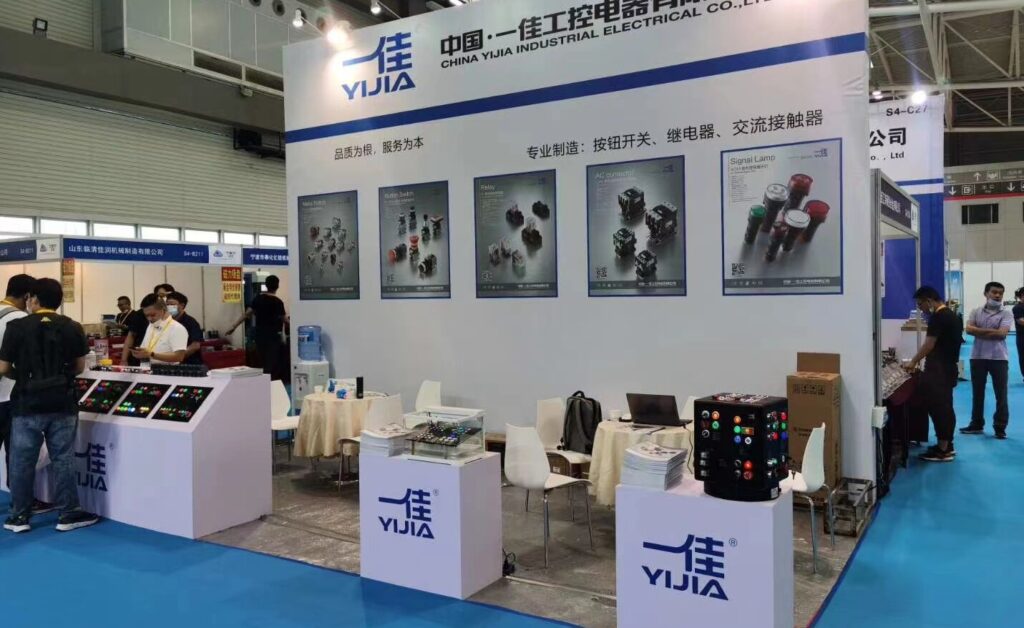

Function and Working Principle
The core function of a metal button switch is to control the circuit and transmit signals. On the basis of basic functions, it can complete the connection or disconnection of circuits through pressing actions, such as controlling motor start and light on/off; In advanced functions, it can serve as a signal triggering component to transmit operational instructions to the control system, such as parameter adjustment in industrial equipment and mode switching in smart homes.
Its working principle is based on the combination of mechanical action and electrical characteristics: when a metal button is pressed, external force overcomes the elastic force of the reset spring, pushing the internal moving contacts to contact the static contacts, forming a path in the circuit; After releasing the button, the reset spring drives the moving contact to reset, separating from the stationary contact and disconnecting the circuit. Some metal button switches also have self-locking function. After pressing, the contacts remain closed and need to be pressed again to reset. This design is suitable for scenarios that require continuous power supply.
Highlight advantages
The advantage of metal button switches lies in the characteristics of metal materials, which make them far superior in performance and adaptability to some plastic buttons:
Super durability: The metal shell (such as stainless steel, aluminum alloy) has strong wear resistance and impact resistance, and can withstand tens of thousands or even hundreds of thousands of pressing operations, far exceeding the service life of plastic buttons, especially suitable for high-frequency operation scenarios.
Excellent environmental adaptability: It can work stably in a wide temperature range of -40 ℃ to 120 ℃, withstand harsh environments such as humidity, dust, oil pollution, etc. Some specially treated models also have anti-corrosion performance and can be used in chemical, marine and other scenarios.
High safety: The metal material itself has flame retardancy, and the shell is often coated with insulation or structurally designed to reduce the risk of electric shock; In industrial scenarios, the anti misoperation structure of the metal emergency stop button can quickly cut off the circuit, ensuring the safety of equipment and personnel.
Texture and Aesthetics: The metal surface can be treated with processes such as wire drawing and electroplating to create a simple industrial style or high-end texture, which can adapt to the rough environment of factory workshops and integrate into the exquisite design of smart homes and high-end instruments.
Typical application scenarios
The application of metal button switches covers multiple fields, and their characteristics make them the preferred choice for specific scenarios:
Industrial automation: Metal buttons serve as operation keys and emergency stop buttons on CNC machine tools, assembly line equipment, and robot control cabinets, withstanding frequent operations and complex workshop environments.
Smart Home and Building Control: The pressing keys of smart door locks, the functional buttons of the living room control panel, and the metal material enhance the texture of the home while withstanding bumps and fingerprint residue in daily use.
Automobiles and Transportation: The air conditioning adjustment button, window control button, and cockpit operation panel of the car’s central control, as well as the rail transit, need to adapt to temperature changes and long-term vibrations inside the car. The stability of metal buttons is particularly important.
Medical equipment: control buttons for surgical instruments, operation keys for monitors, made of metal material that is easy to clean and resistant to disinfection (such as alcohol wiping), meeting the hygiene requirements of medical settings.
Outdoor equipment: Operation buttons for outdoor distribution boxes, street light control boxes, and charging stations, with metal casings that resist wind, rain, and UV erosion, ensuring long-term reliable operation.
Selection Guide
The selection of metal button switches should be based on actual needs, with a focus on the following elements:
Usage environment: High temperature resistant metals (such as nickel plated brass) are preferred for high-temperature environments; Stainless steel material with sealed design (IP65 or above protection level) should be selected for damp or corrosive scenarios.
Load parameters: Select contact capacity based on the current and voltage of the control circuit. For small current signal control, micro contacts can be selected. For high current equipment such as motors, large load contacts need to be matched.
Operation requirements: Silver alloy contacts (with good conductivity and wear resistance) should be selected for high-frequency operation scenarios (such as game console buttons); Priority should be given to emergency stop buttons with self-locking function for scenarios that require emergency shutdown.
Installation and adaptation: Confirm the panel opening size, wiring method (welding, pin, screw wiring), and whether it needs to be compatible with the equipment control system (such as matching voltage for models with LED indicator lights).
Certification and standards: Industrial scenarios must comply with IEC, UL and other certifications; Medical equipment must pass medical grade certifications such as ISO 13485 to ensure compliance and safety.
Nursing and Maintenance
Reasonable care and maintenance can extend the service life of metal button switches:
Daily cleaning: Use a dry cloth or dip a small amount of neutral cleaning agent to wipe the surface, avoiding the use of corrosive liquids such as alcohol and acid-base solutions to prevent metal surface oxidation or coating peeling.
Regular inspection: Check the pressing feel of the button every 3-6 months. If there is any jamming or slow reset, it may be due to dust accumulation in the internal spring or contacts. The power should be turned off and the outer shell should be disassembled for cleaning (only operated by professionals); Observe whether the contacts are oxidized. Oxidation can cause poor contact, and the surface of the contacts can be lightly polished.
Environmental protection: In humid environments, regularly check whether the seals are aging and replace them in a timely manner to prevent water vapor from entering the interior; Avoid severe impact on the button to prevent deformation of the outer shell or damage to the internal structure.
Replacement and maintenance: When the button fails to reset or the contact is stuck, it is necessary to replace it with the same type of accessory to avoid mixing buttons of different specifications, so as not to affect the stability of the circuit.
Metal button switches demonstrate unique value in reliability, adaptability, and texture due to the hard core performance of metal materials. Whether in harsh industrial production environments or exquisite daily life scenes, they can accurately meet the needs of human-computer interaction. When choosing, it is necessary to combine the characteristics of the scene and pay attention to maintenance in daily life in order to fully leverage its advantages and ensure long-term stable operation.

